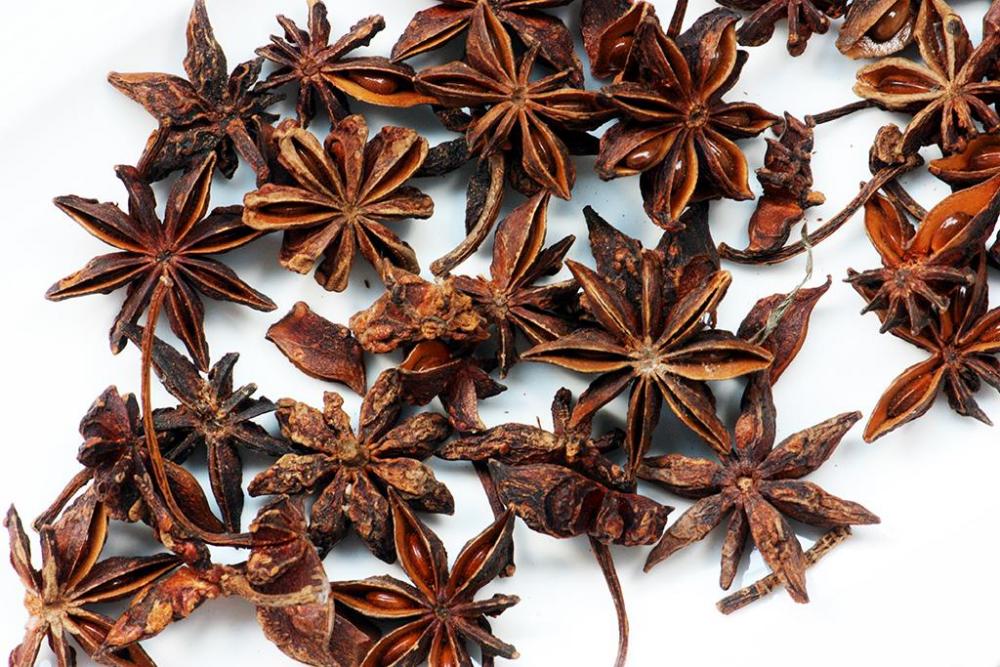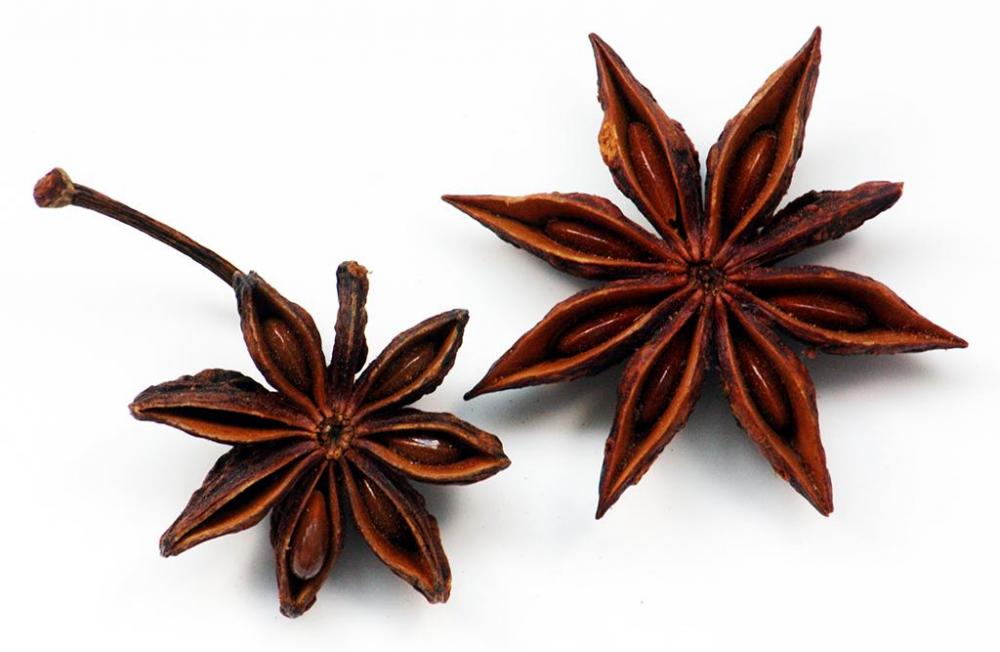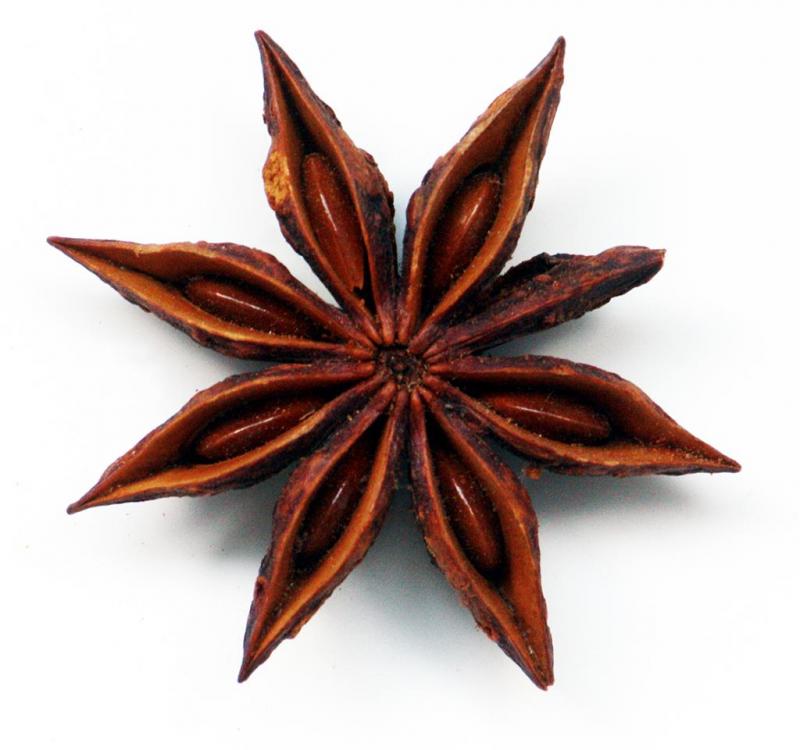2. Star Anise
If you have used star anise, Illicium verum in your cooking, there is a strong chance that they came from Guangxi where I live. The plant is native to here and Guangxi produces 80% of the world crop. Known in Chinese as 八角 (bā jiǎo), literally ‘8 horns’ although they can, in fact, have between 6 and 10 ‘horns’, it is used extensively in Chinese cooking, but also in medicines, perfumery, soaps, toothpastes, mouthwashes, skin creams etc.
They are the pericarp of the flowers of a small tree in the magnolia family. I had one growing outside my second home in the countryside. The flowers are harvested before they ripen and dried to these hard brown stars. They are not related to aniseed, but both contain the chemical, anethole which supplies the distinctive flavour, also found in fennel.
Again they are used as a component of five-spice powder, but also used whole for their umami in hot pots, soups, braised and stewed dishes etc. They are not actually eaten and may be removed before serving. They can, of course, also be used in many western dishes. I use them in Italian style ragu and even Scottish mince and tatties!
Although they hold their flavour much longer than the Sichuan peppercorns above, I'd still recommend buying them as fresh as you can and in small quantities. In fact, I'd say that applies to all spices.






